Recent Blog Posts
Tips to Help Keep You Safe on Snowy Winter Roads
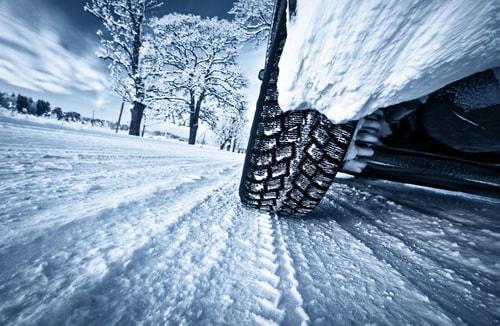 With November coming to a close in a few short weeks, winter is well on its way and in Illinois, that typically means snow and other inclement weather is on its way too. With winter comes snow and with snow comes more accidents than most other times of the year. According to the National Highway Traffic Safety Administration (NHTSA), nearly 17 percent of all car crashes occur when there are winter conditions on the roads, like snow and ice. While winter wonderlands can be a dream landscape for some people, they can easily turn into a nightmare for others who are involved in winter car crashes. Here are four ways you can help keep yourself and others safe during this winter season:
With November coming to a close in a few short weeks, winter is well on its way and in Illinois, that typically means snow and other inclement weather is on its way too. With winter comes snow and with snow comes more accidents than most other times of the year. According to the National Highway Traffic Safety Administration (NHTSA), nearly 17 percent of all car crashes occur when there are winter conditions on the roads, like snow and ice. While winter wonderlands can be a dream landscape for some people, they can easily turn into a nightmare for others who are involved in winter car crashes. Here are four ways you can help keep yourself and others safe during this winter season:
Winter Road Safety Actually Starts off the Road
Before you get on the road after that first snow of the season, you need to thoroughly check your car to make sure it is safe to drive. When it gets cold outside, the air pressure drops, so you should check your tire pressure to make sure your tires are at peak performance. You should also check your windshield wipers to make sure they are working and are not streaking your windshield. It is also a good idea to make sure that all of your headlights, tail lights and blinkers are working - sometimes these are the only things that other drivers can see in poor visibility.
Halloween Safety Tips
 Halloween is a wickedly magical time of year for children to enjoy - but it is also a dangerous time of year. According to Safe Kids Worldwide, children are more than twice as likely to be hit and killed by a car on Halloween than any other day of the year. Trick-or-treating is a Halloween tradition that is enjoyed by children of all ages, but with an increase of pedestrians on the road and a decrease in daylight, it can make for deadly circumstances resulting in slip-and-fall accidents or car accidents. Fortunately, there are ways you can keep your children safe during this spooky season. Here are four tips to have a safe Halloween.
Halloween is a wickedly magical time of year for children to enjoy - but it is also a dangerous time of year. According to Safe Kids Worldwide, children are more than twice as likely to be hit and killed by a car on Halloween than any other day of the year. Trick-or-treating is a Halloween tradition that is enjoyed by children of all ages, but with an increase of pedestrians on the road and a decrease in daylight, it can make for deadly circumstances resulting in slip-and-fall accidents or car accidents. Fortunately, there are ways you can keep your children safe during this spooky season. Here are four tips to have a safe Halloween.
Choose a Safe Costume
Halloween is all about the costumes, whether your child is a sweet and sparkly fairy or a dark and mysterious witch. Help your children stay safe by choosing light-colored costumes when possible. Also, make sure the costume fits your child to help prevent any trips or falls from baggy fabric and make sure masks fit correctly so their vision is not obstructed.
Tips for Safe Autumn Driving
 Fall is many people’s favorite time of year - you get a break from the sweltering heat of summer, leaves are changing into brilliant autumnal colors and you get to look forward to holidays like Halloween and Thanksgiving. Unfortunately, in the midwest, fall also brings inclement weather, like rain and fog, which can make for dangerous driving situations. According to a study published by the National Highway Traffic Safety Administration (NHTSA), in car crashes related to roadway and atmospheric conditions, around 75 percent were related to dangerous roadway conditions. Here are four tips to keep you safe during your autumn road trips.
Fall is many people’s favorite time of year - you get a break from the sweltering heat of summer, leaves are changing into brilliant autumnal colors and you get to look forward to holidays like Halloween and Thanksgiving. Unfortunately, in the midwest, fall also brings inclement weather, like rain and fog, which can make for dangerous driving situations. According to a study published by the National Highway Traffic Safety Administration (NHTSA), in car crashes related to roadway and atmospheric conditions, around 75 percent were related to dangerous roadway conditions. Here are four tips to keep you safe during your autumn road trips.
-
Watch Your Speed
Fall’s infamous rainy weather can make for slick and slippery roads. You should be sure to increase the following distance between your vehicle and the vehicle in front of you in case you need to stop suddenly. If you can see water on the roadways, you are also at a higher risk of hydroplaning, which happens when your tires lose traction on a wet road. Make sure you are not speeding and you are going a safe speed for the conditions you are driving in, even if it is lower than the speed limit.
Tips to Help You Deal with Insurance Companies After a Car Accident
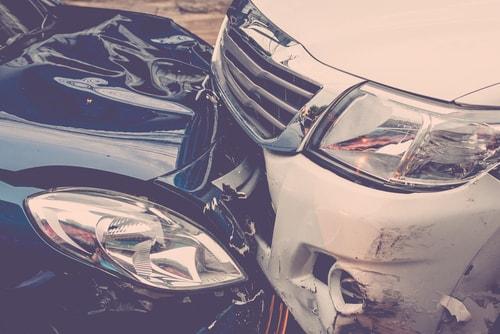 Getting into a car accident is a scary experience and can be traumatic for all those involved. When you are recovering from injuries you have sustained from a car accident, the last thing you want to be doing is fighting with an insurance company that does not want to pay for your damages. Many times, insurance companies will do everything in their power to make sure that you are paid the absolute minimum amount that they can get away with. In order to receive a decent insurance payout, you should follow these five tips to help:
Getting into a car accident is a scary experience and can be traumatic for all those involved. When you are recovering from injuries you have sustained from a car accident, the last thing you want to be doing is fighting with an insurance company that does not want to pay for your damages. Many times, insurance companies will do everything in their power to make sure that you are paid the absolute minimum amount that they can get away with. In order to receive a decent insurance payout, you should follow these five tips to help:
-
Be Prepared
Before you call your insurance company, be sure to have all of the necessary information and paperwork on hand to answer the questions your insurance company is sure to have. You will need information and documents pertaining to the accident, including:
- Photos from the accident, including any damage to your vehicle;
Types of Evidence You Should Collect in an Illinois Car Accident
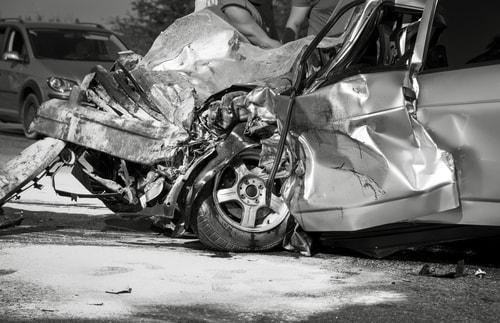 When you get into a car accident, the first thing on your mind is probably not collecting evidence and documenting what just happened - but it should be. The moments directly after a car crash are crucial because the crash is still fresh in your mind and the scene of the accident is untouched. Dealing with insurance companies after a car crash can be annoying at best and infuriating at worst, but if you have overwhelming evidence supporting your claim, you will probably have an easier time being compensated. Evidence toward your claim can also help you in court if you are seeking damages owed by another driver.
When you get into a car accident, the first thing on your mind is probably not collecting evidence and documenting what just happened - but it should be. The moments directly after a car crash are crucial because the crash is still fresh in your mind and the scene of the accident is untouched. Dealing with insurance companies after a car crash can be annoying at best and infuriating at worst, but if you have overwhelming evidence supporting your claim, you will probably have an easier time being compensated. Evidence toward your claim can also help you in court if you are seeking damages owed by another driver.
Police Report
One of the most important pieces of information you can have is a copy of the police report that was created about your accident. The report will contain information about the accident and will be filed by the officer that responds to your call. Give the police as much information about the accident as possible. Police reports are what the insurance company will look at when determining what to pay. Important elements to include in a police report are:
Tips to Keep You Safe on Your Motorcycle
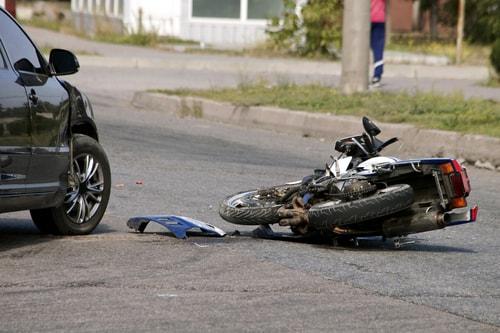 Unfortunately, motorcyclists are one of the groups that experience the largest number of traffic fatalities in the United States. According to the National Highway Traffic Safety Association, motorcycles accounted for only about three percent of all registered vehicles in the United States, but 15 percent of traffic fatalities in 2016. Many people enjoy riding a motorcycle in the warmer months, but without proper safety precautions, this fun activity can turn deadly. Here are four tips to minimize the danger of experiencing a motorcycle accident:
Unfortunately, motorcyclists are one of the groups that experience the largest number of traffic fatalities in the United States. According to the National Highway Traffic Safety Association, motorcycles accounted for only about three percent of all registered vehicles in the United States, but 15 percent of traffic fatalities in 2016. Many people enjoy riding a motorcycle in the warmer months, but without proper safety precautions, this fun activity can turn deadly. Here are four tips to minimize the danger of experiencing a motorcycle accident:
Regularly Maintain Your Bike
The first step in making sure you are safe on the road is making sure that your bike is properly maintained. Check to make sure that oil levels are good, your oil is changed regularly, breaks are working properly and your tires are inflated. Having a broken-down bike can mean you will not be able to maneuver properly in the event of an emergency.
Illinois Laws Concerning Ridesharing Companies and Drivers
 Technology is a wonderful thing - we have the ability to do more online than ever before, such as ordering groceries and making appointments. Ridesharing is another service that is available to smartphone users, allowing them to request rides from independent drivers, rather than calling a taxi company or trying to hail a cab from the side of the street. With the emergence of companies such as Uber and Lyft, ridesharing has become more popular and more readily available to people, but they also bring about certain issues that lawmakers are still in the process of figuring out. Liability in ridesharing accidents is still a fuzzy area and can be difficult to determine, but an experienced attorney can help hash out the details.
Technology is a wonderful thing - we have the ability to do more online than ever before, such as ordering groceries and making appointments. Ridesharing is another service that is available to smartphone users, allowing them to request rides from independent drivers, rather than calling a taxi company or trying to hail a cab from the side of the street. With the emergence of companies such as Uber and Lyft, ridesharing has become more popular and more readily available to people, but they also bring about certain issues that lawmakers are still in the process of figuring out. Liability in ridesharing accidents is still a fuzzy area and can be difficult to determine, but an experienced attorney can help hash out the details.
What Constitutes a Ridesharing Company?
The Illinois Transportation Network Providers Act outlines the laws concerning the operation of companies. The Act states that a transportation network company (TNC) is any company that uses digital means to connect passengers with ride services provided by TNC drivers who own their own vehicles. Popular TNC’s include Uber, Lyft, Sidecar, and Via. These apps work with passengers logging into the company’s app and inputting their location, alerting drivers who are nearby. Those drivers then utilize the app’s GPS technology and pick up the passenger to take them to their destination. These apps typically give users information such as estimated fares, the number of drivers nearby and driver ratings and feedback.
McDonald’s Salad Linked to Multistate Cyclosporiasis Outbreak
 McDonald’s is known around the world for their golden arches, Ronald McDonald and their famous hamburgers and fries. Lately, McDonald’s has been in the news because of a suspicion that lettuce in their salads has caused over 100 people in the Midwest to become sick with an intestinal parasite. In response to the trend of people reporting they had eaten a salad at McDonald’s, the Illinois Department of Public Health is investigating the cases of food poisoning to determine if there is a link between the outbreak and the restaurant.
McDonald’s is known around the world for their golden arches, Ronald McDonald and their famous hamburgers and fries. Lately, McDonald’s has been in the news because of a suspicion that lettuce in their salads has caused over 100 people in the Midwest to become sick with an intestinal parasite. In response to the trend of people reporting they had eaten a salad at McDonald’s, the Illinois Department of Public Health is investigating the cases of food poisoning to determine if there is a link between the outbreak and the restaurant.
Investigations Are Underway
Over 100 people have reported cyclospora poisoning after they had eaten a salad from McDonald’s. The reports began in Illinois and soon were also reported in Iowa. The lettuce from the salads in Illinois and Iowa came from the same supplier, so McDonald’s, which is based in Chicago, has stopped serving salads at 3,000 restaurants in 14 states across the Midwest as a precautionary measure.
Car Insurance Requirements in Illinois
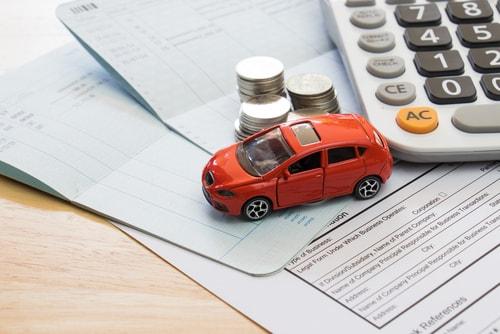 Almost every state in the country requires drivers to have some sort of car insurance. It is illegal for you to drive without insurance or to have financial responsibility for any damages that may occur while you are driving. Though the laws on the amount of insurance and the type of coverage that you are required to have vary from state to state, many states require that you at least have bodily injury and property damage coverage. Though it is illegal to drive without insurance, many people do--according to the Insurance Information Institute, in 2015, an estimated 13 percent of drivers were uninsured. In Illinois, the number was estimated to be slightly over the national percentage at 13.7 percent. It is important to understand what type of insurance you are required to have in the state of Illinois and what it means if you are in an accident that involves an uninsured or underinsured motorist.
Almost every state in the country requires drivers to have some sort of car insurance. It is illegal for you to drive without insurance or to have financial responsibility for any damages that may occur while you are driving. Though the laws on the amount of insurance and the type of coverage that you are required to have vary from state to state, many states require that you at least have bodily injury and property damage coverage. Though it is illegal to drive without insurance, many people do--according to the Insurance Information Institute, in 2015, an estimated 13 percent of drivers were uninsured. In Illinois, the number was estimated to be slightly over the national percentage at 13.7 percent. It is important to understand what type of insurance you are required to have in the state of Illinois and what it means if you are in an accident that involves an uninsured or underinsured motorist.
Types of Dog Bite Injuries and Infections
 Dogs are commonly called man’s best friend--and for good reason. More than 36 percent of American households own at least one dog. Dogs have even been proven to decrease stress, get us moving more often and are great playmates for children--but they can also be dangerous. According to the American Veterinary Medical Association (AVMA), more than 4.5 million people are bitten by dogs each day, with nearly 800,000 people needing medical attention. Children are most susceptible to dog bites--nearly half of all dog bites that occur happen to children, especially children under the age of 14.
Dogs are commonly called man’s best friend--and for good reason. More than 36 percent of American households own at least one dog. Dogs have even been proven to decrease stress, get us moving more often and are great playmates for children--but they can also be dangerous. According to the American Veterinary Medical Association (AVMA), more than 4.5 million people are bitten by dogs each day, with nearly 800,000 people needing medical attention. Children are most susceptible to dog bites--nearly half of all dog bites that occur happen to children, especially children under the age of 14.
Injuries caused by dog bites can range from mild to severe and may leave lasting damage if the injury was bad enough. It is important to understand that any dog can bite--it does not matter what breed or how big the dog is, there is always a risk of being bitten. Understanding the injuries they cause can help you keep yourself and your loved ones safe around these lovable companions.
 847-232-7180
847-232-7180






